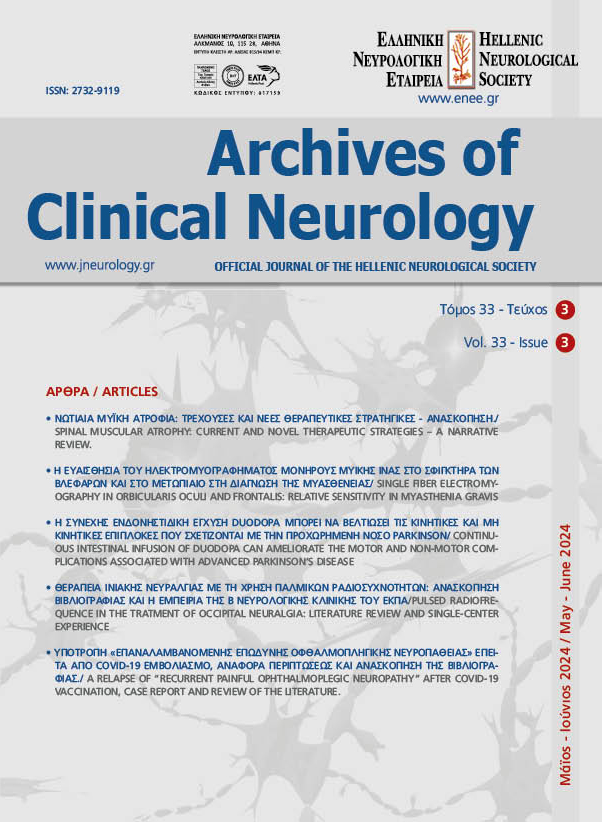SINGLE FIBER ELECTROMYOGRAM IN ORBICULARIS OCULI AND FRONTALIS: RELATIVE SENSITIVITY IN MYASTHENIA GRAVIS
Keywords:
Single fiber Electromyogram, Myasthenia gravis, Orbicularis oculi, FrontalisAbstract
SINGLE FIBER ELECTROMYOGRAM IN ORBICULARIS OCULI AND FRONTALIS: RELATIVE SENSITIVITY IN MYASTHENIA GRAVIS
Thomas Zambelis, Evangelos Anagnostou, Nikolaos Karandreas, Vassiliki Zouvelou
Abstract
Objectives: The sensitivity of Single Fiber Electromyogram for the diagnosis of neuromuscular transmission disorders is high. The facial muscles usually tested are Orbicularis oculi and Frontalis. In this study we investigated the relative sensitivity of these two muscles in myasthenia gravis
Methods: The patients are divided in 3 groups: Patients with ocular symptoms (ptosis and/or diplopia) (group 1), with bulbar and/or limb weakness (group 2) and in clinical remission (group3). SFEMG was performed with a concentric needle electrode using voluntary activation. Mean consecutive difference and upper normal values for individual fiber pairs are compared with our normal values
Results: A total of 51 consecutive myasthenia gravis patients are recruited: 22 male and 29 female, mean age 56.3±17.3 years. The sensitivity of Orbicularis oculi is found 76.9 and of Frontalis 68.6. Combining the two muscles, their sensitivity reaches 86.5%. Both muscles are found more frequently abnormal in group 2. In group 1 we observed significantly more frequently abnormal jitter values in those with both ptosis and diplopia.
Discussion: Both facial muscles show high sensitivity in the diagnosis of Myasthenia gravis and both are complementary in the diagnosis of neuromuscular junction diseases. We propose Orbicularis oculi as the first muscle to be tested.


